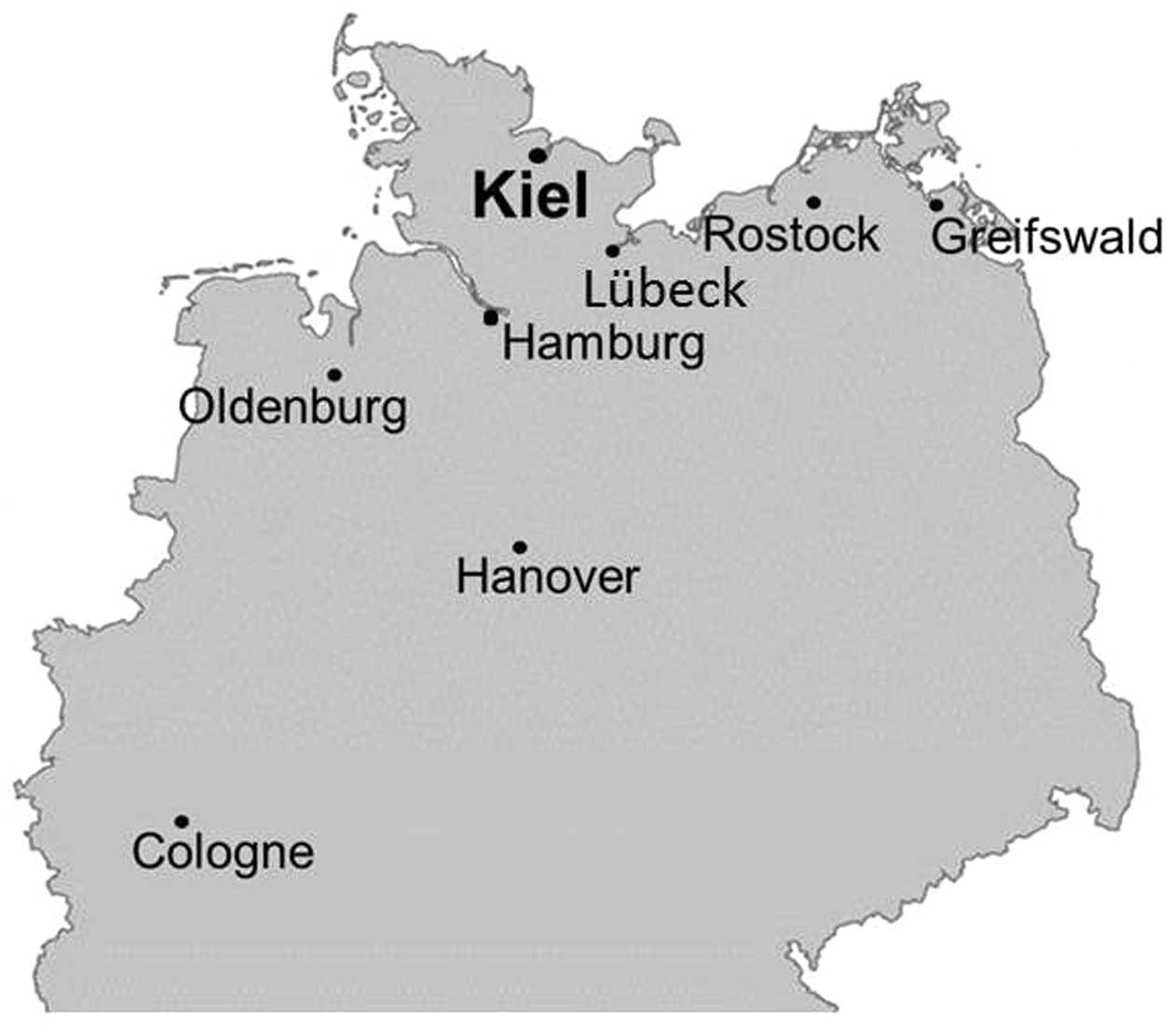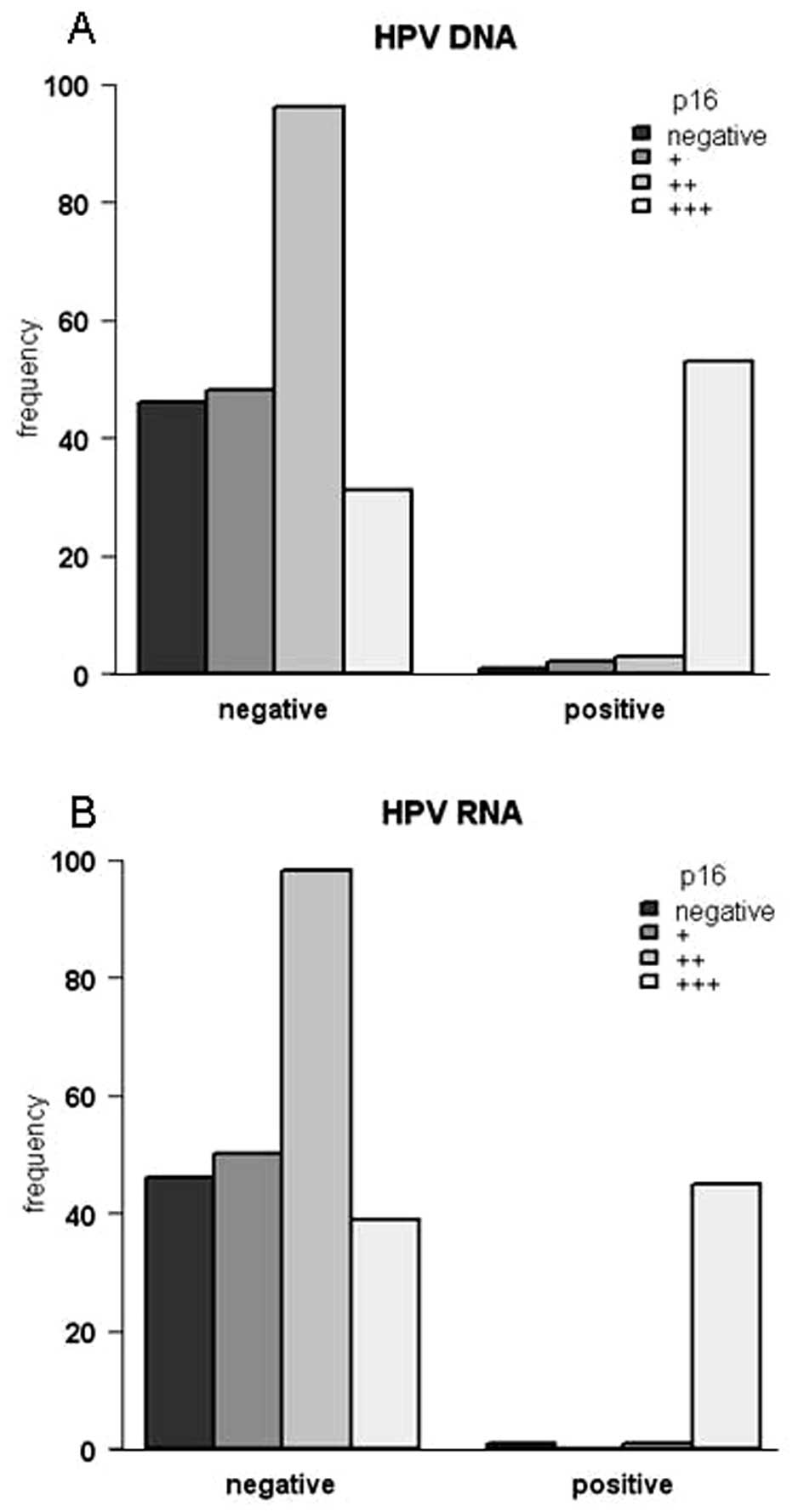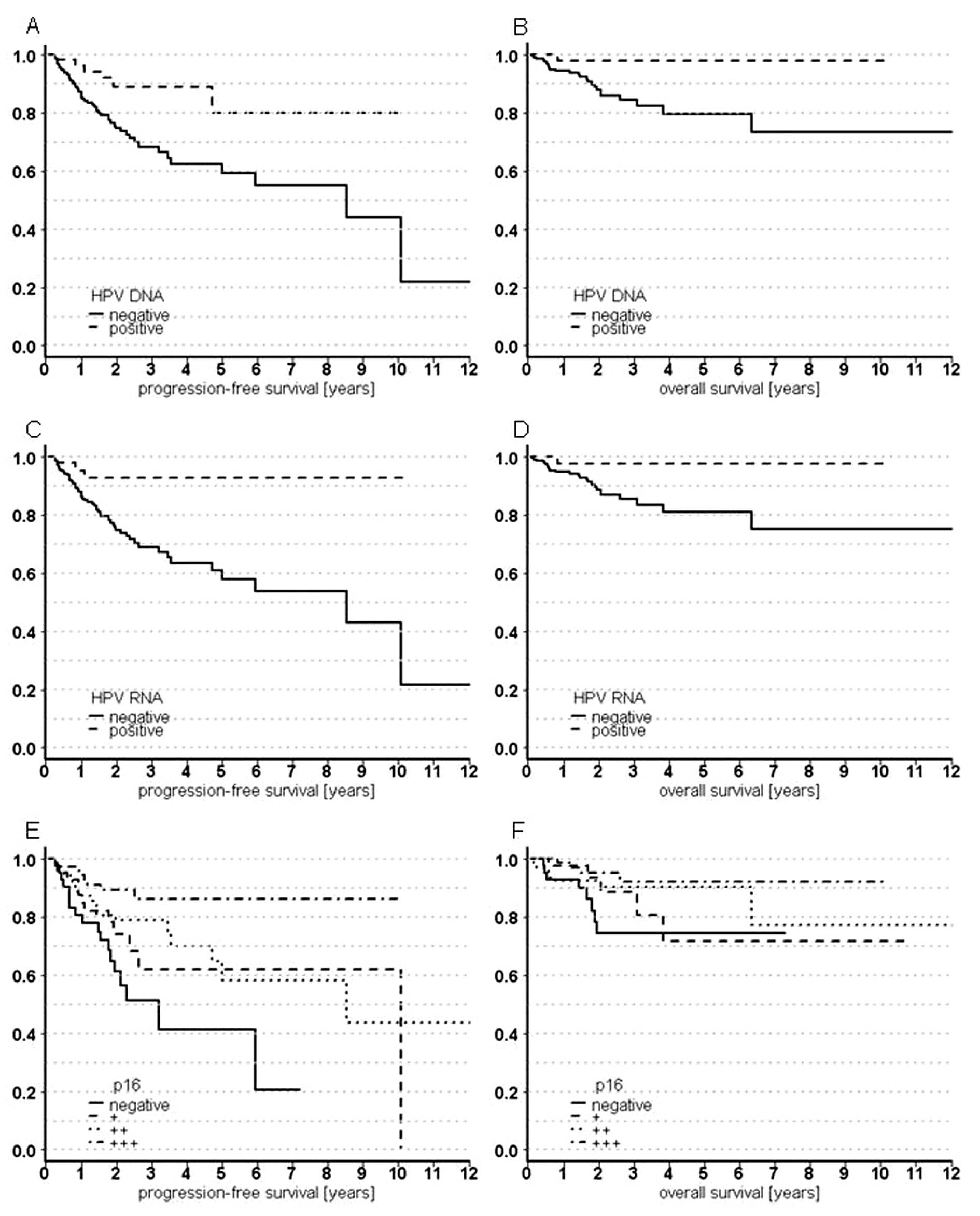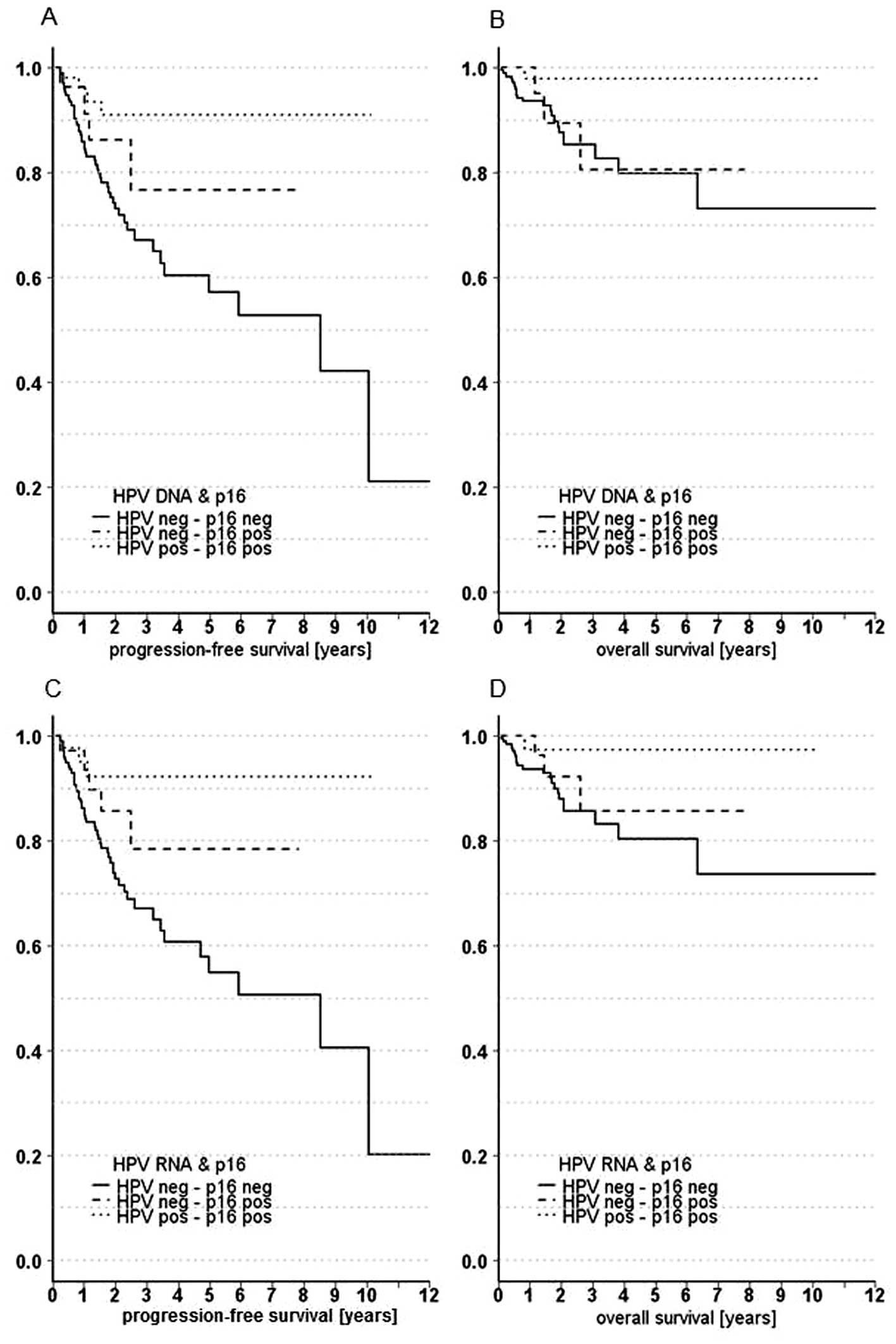|
1
|
Fakhry C, Westra WH, Li S, et al: Improved
survival of patients with human papillomavirus-positive head and
neck squamous cell carcinoma in a prospective clinical trial. J
Natl Cancer Inst. 100:261–269. 2008. View Article : Google Scholar : PubMed/NCBI
|
|
2
|
Gillison ML, Koch WM, Capone RB, et al:
Evidence for a causal association between human papillomavirus and
a subset of head and neck cancers. J Natl Cancer Inst. 92:709–720.
2000. View Article : Google Scholar : PubMed/NCBI
|
|
3
|
Klussmann JP, Weissenborn SJ, Wieland U,
et al: Prevalence, distribution, and viral load of human
papillomavirus 16 DNA in tonsillar carcinomas. Cancer.
92:2875–2884. 2001. View Article : Google Scholar : PubMed/NCBI
|
|
4
|
Kreimer AR, Clifford GM, Boyle P, et al:
Human papillomavirus types in head and neck squamous cell
carcinomas worldwide: a systematic review. Cancer Epidemiol
Biomarkers Prev. 14:467–475. 2005. View Article : Google Scholar : PubMed/NCBI
|
|
5
|
Ang KK, Harris J, Wheeler R, et al: Human
papillomavirus and survival of patients with oropharyngeal cancer.
N Engl J Med. 363:24–35. 2010. View Article : Google Scholar : PubMed/NCBI
|
|
6
|
Smith EM, Ritchie JM, Summersgill KF, et
al: Age, sexual behavior and human papillomavirus infection in oral
cavity and oropharyngeal cancers. Int J Cancer. 108:766–772. 2004.
View Article : Google Scholar : PubMed/NCBI
|
|
7
|
Holzinger D, Schmitt M, Dyckhoff G, et al:
Viral RNA patterns and high viral load reliably define oropharynx
carcinomas with active HPV16 involvement. Cancer Res. 72:4993–5003.
2012. View Article : Google Scholar : PubMed/NCBI
|
|
8
|
Hoffmann M, Ihloff AS, Görögh T, et al:
p16(INK4a) over-expression predicts translational active human
papillomavirus infection in tonsillar cancer. Int J Cancer.
127:1595–1602. 2910. View Article : Google Scholar : PubMed/NCBI
|
|
9
|
Hoffmann M, Tribius S, Quabius ES, et al:
HPV DNA, E6(*) I-mRNA expression and p16(INK4A)
immunohistochemistry in head and neck cancer - How valid is
p16(INK4A) as surrogate marker? Cancer Lett. 323:88–96. 2012.
View Article : Google Scholar : PubMed/NCBI
|
|
10
|
Shi W, Kato H, Perez-Ordonez B, et al:
Comparative prognostic value of HPV16 E6 mRNA compared with in situ
hybridization for human oropharyngeal squamous carcinoma. J Clin
Oncol. 27:6213–6221. 2009. View Article : Google Scholar : PubMed/NCBI
|
|
11
|
Smeets SJ, Hesselink AT, Speel E-JM, et
al: A novel algorithm for reliable detection of human
papillomavirus in paraffin embedded head and neck cancer specimen.
Int J Cancer. 121:2465–2472. 2007. View Article : Google Scholar : PubMed/NCBI
|
|
12
|
Wiest T, Schwarz E, Enders C, et al:
Involvement of intact HPV16 E6/E7 gene expression in head and neck
cancers with unaltered p53 status and perturbed pRb cell cycle
control. Oncogene. 21:1510–1517. 2002. View Article : Google Scholar : PubMed/NCBI
|
|
13
|
Attner P, Du J, Näsman A, et al: Human
papillomavirus and survival in patients with base of tongue cancer.
Int J Cancer. 128:2892–2897. 2011. View Article : Google Scholar : PubMed/NCBI
|
|
14
|
Tribius S, Ihloff AS, Rieckmann T, et al:
Impact of HPV status on treatment of squamous cell cancer of the
oropharynx: what we know and what we need to know. Cancer Lett.
304:71–79. 2011. View Article : Google Scholar : PubMed/NCBI
|
|
15
|
Hoffmann M, Görögh T, Gottschlich S, et
al: Human papilloma-viruses in head and neck cancer: 8
year-survival-analysis of 73 patients. Cancer Lett. 218:199–206.
2005.PubMed/NCBI
|
|
16
|
Straetmans JM, Olthof N, Mooren JJ, et al:
Human papillomavirus reduces the prognostic value of nodal
involvement in tonsillar squamous cell carcinomas. Laryngoscope.
119:1951–1957. 2009. View Article : Google Scholar : PubMed/NCBI
|
|
17
|
Hoffmann M, Kahn T, Mahnke CG, et al:
Prevalence of human papillomavirus in squamous cell carcinoma of
the head and neck determined by polymerase chain reaction and
Southern blot hybridization: proposal for optimized diagnostic
requirements. Acta Otolaryngol. 118:138–144. 1998. View Article : Google Scholar
|
|
18
|
Näsman A, Attner P, Hammarstedt L, et al:
Incidence of human papillomavirus (HPV) positive tonsillar
carcinoma in Stockholm, Sweden: an epidemic of viral-induced
carcinoma? Int J Cancer. 125:362–366. 2009.PubMed/NCBI
|
|
19
|
Termine N, Panzarella V, Falaschini S, et
al: HPV in oral squamous cell carcinoma vs. head and neck squamous
cell carcinoma biopsies: a meta-analysis (1988–2007). Ann Oncol.
19:1681–1690. 2008. View Article : Google Scholar : PubMed/NCBI
|
|
20
|
Pannone G, Rodolico V, Santoro A, et al:
Evaluation of a combined triple method to detect causative HPV in
oral and oropharyngeal squamous cell carcinomas: p16
immunohisto-chemistry, consensus PCR HPV-DNA, and in situ
hybridization. Infect Agent Cancer. 7:42012. View Article : Google Scholar
|
|
21
|
Holzinger D, Flechtenmacher C, Henfling N,
et al: Identification of oropharyngeal squamous cell carcinomas
with active HPV16 involvement by immunohistochemical analysis of
the retinoblastoma protein pathway. Int J Cancer. 133:1389–1400.
2013. View Article : Google Scholar : PubMed/NCBI
|
|
22
|
Kostareli E, Holzinger D, Bogatyrova O, et
al: HPV-related methylation signature predicts survival in
oropharyngeal squamous cell carcinomas. J Clin Invest.
123:2488–2501. 2013. View Article : Google Scholar : PubMed/NCBI
|
|
23
|
Reuschenbach M, Clad A, von Knebel
Doeberitz C, et al: Performance of p16INK4a-cytology,
HPV mRNA, and HPV DNA testing to identify high grade cervical
dysplasia in women with abnormal screening results. Gynecol Oncol.
119:98–105. 2010. View Article : Google Scholar
|
|
24
|
Reuschenbach M, Kansy K, Garbe K, et al:
Lack of evidence of human papillomavirus-induced squamous cell
carcinomas of the oral cavity in southern Germany. Oral Oncol.
49:937–942. 2013. View Article : Google Scholar : PubMed/NCBI
|
|
25
|
Remmerbach TW, Brinckmann UG, Hemprich A,
et al: PCR detection of human papillomavirus of the mucosa:
comparison between MY09/11 and GP5+/6+ primer
sets. J Clin Virol. 30:302–208. 2004. View Article : Google Scholar : PubMed/NCBI
|
|
26
|
Quabius ES, Ossenkop L, Harder S and Kern
M: Dental implants stimulate expression of Interleukin-8 and its
receptor in human blood - An in vitro approach. J Biomed Mater Res
B Appl Biomater. 100:1283–1288. 2012. View Article : Google Scholar : PubMed/NCBI
|
|
27
|
Halec G, Schmitt M, Dondog B, et al:
Biological activity of probable/possible high-risk human
papillomavirus types in cervical cancer. Int J Cancer. 132:63–71.
2013. View Article : Google Scholar : PubMed/NCBI
|
|
28
|
Klaes R, Friedrich T, Spitkovsky D, et al:
Overexpression of p16(INK4A) as a specific marker for dysplastic
and neoplastic epithelial cells of the cervix uteri. Int J Cancer.
92:276–284. 2001. View Article : Google Scholar
|
|
29
|
Gillison ML, D’Souza G, Westra W, et al:
Distinct risk factor profiles for human papillomavirus type
16-positive and human papillomavirus type 16-negative head and neck
cancers. J Natl Cancer Inst. 100:407–420. 2008. View Article : Google Scholar : PubMed/NCBI
|
|
30
|
Weiss D, Koopmann M and Rudack C:
Prevalence and impact on clinicopathological characteristics of
human papillomavirus-16 DNA in cervical lymph node metastases of
head and neck squamous cell carcinoma. Head Neck. 33:856–862. 2011.
View Article : Google Scholar : PubMed/NCBI
|
|
31
|
Hoffmann M, Gottschlich S, Görögh T, et
al: Human papilloma-viruses in lymph node neck metastases of head
and neck cancers. Acta Otolaryngol. 125:415–4121. 2005.PubMed/NCBI
|
|
32
|
Hoffmann M, Orlamünder A, Sucher J, et al:
HPV16 DNA in histologically confirmed tumour-free neck lymph nodes
of head and neck cancers. Anticancer Res. 26:663–670.
2006.PubMed/NCBI
|
|
33
|
Hoffmann M, Klose N, Gottschlich S, Görögh
T, Fazel A, Lohrey C, et al: Detection of human papillomavirus DNA
in benign and malignant sinonasal neoplasms. Cancer Lett.
239:64–70. 2006. View Article : Google Scholar : PubMed/NCBI
|
|
34
|
Hoffmann M, Scheunemann D, Fazel A, et al:
Human papillomavirus and p53 polymorphism in codon 72 in head and
neck squamous cell carcinoma. Oncol Rep. 21:809–814.
2009.PubMed/NCBI
|
|
35
|
Chaturvedi AK, Engels EA, Pfeiffer RM, et
al: Human papillomavirus and rising oropharyngeal cancer incidence
in the United States. J Clin Oncol. 29:4294–4301. 2011. View Article : Google Scholar : PubMed/NCBI
|
|
36
|
Chung CH and Gillison ML: Human
papillomavirus in head and neck cancer: its role in pathogenesis
and clinical implications. Clin Cancer Res. 15:6758–6762. 2009.
View Article : Google Scholar : PubMed/NCBI
|
|
37
|
Klussmann JP, Mooren JJ, Lehnen M, et al:
Genetic signatures of HPV-related and unrelated oropharyngeal
carcinoma and their prognostic implications. Clin Cancer Res.
15:1779–1786. 2009. View Article : Google Scholar : PubMed/NCBI
|
|
38
|
Liang C, Marsit CJ, McClean MD, et al:
Biomarkers of HPV in head and neck squamous cell carcinoma. Cancer
Res. 72:5004–5013. 2012. View Article : Google Scholar : PubMed/NCBI
|
|
39
|
Lassen P, Eriksen JG, Hamilton-Dutoit S,
et al: Effect of HPV-associated p16INK4A expression on response to
radio-therapy and survival in squamous cell carcinoma of the head
and neck. J Clin Oncol. 27:1992–1998. 2009. View Article : Google Scholar : PubMed/NCBI
|
|
40
|
Lassen P, Eriksen JG, Hamilton-Dutoit S,
Tramm T, et al: HPV-associated p16-expression and response to
hypoxic modification of radiotherapy in head and neck cancer.
Radiother Oncol. 94:30–35. 2010. View Article : Google Scholar : PubMed/NCBI
|
|
41
|
O’Sullivan B, Hui Huang S, Siu LL, et al:
Deintensification candidate subgroups in human
papillomavirus-related oropharyngeal cancer according to minimal
risk of distant metastasis. J Clin Oncol. 31:543–550.
2013.PubMed/NCBI
|


















